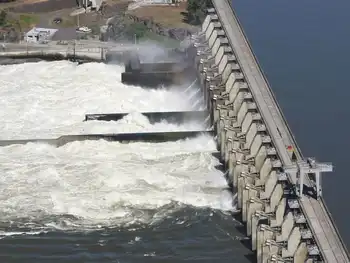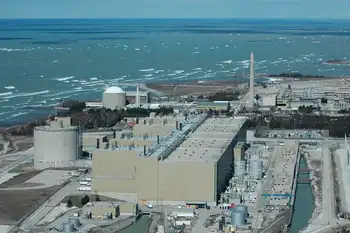Toronto Hydro counting poles
By Toronto Star
Electrical Testing & Commissioning of Power Systems
Our customized live online or in‑person group training can be delivered to your staff at your location.

- Live Online
- 12 hours Instructor-led
- Group Training Available
A: One at a time.
Just ask La Tanya Grant. She's one of 50 people hired this summer to count trek across the city, counting every light and pole.
And it's not as simple as it sounds.
Is the pole wood, metal or concrete? Free-standing or supported by guywires? Festooned with hydro wires, or just supporting a streetlight?
In the deadly serious world of utility regulation, it all makes a difference. When the Ontario Energy Board orders a utility like Toronto Hydro to do an inventory of its street-lighting assets, it had better be a thorough one.
And it comes down to a few dozen specially trained workers like Grant, an auto mechanics student at Centennial College, to hike past every pole, noting its idiosyncrasies.
The scorching summer weather was sometimes a drawback.
"There was one week it was like 40-something," says Grant, who was working her way through Guildwood. "You can literally feel yourself melting."
"I would freeze water overnight. I like to start early because it's not as hot. I'd be at my location for 7 a.m., and by 10 o'clock the water's defrosted and warm."
But it's a good job, she gets lots of exercise, and people are friendly, except for the ones who think she's writing parking tickets.
The counters carry electronic devices, equipped with GPS, and loaded with maps showing all the light poles in the city.
Counters have to walk past each one, noting its characteristics: With or without hydro wires buried in the ground or bolted to a base old fashioned "acorn" light or the modern "cobra head" even the wattage of the bulb.
They enter the characteristics by clicking through a program devised by HDR/iTrans, the firm contracted to do the job by Toronto Hydro.
On a good day, cruising through a suburban neighbourhood where most of the poles have the same characteristics and the electric wires are underground, Grant can catalogue 700 poles a day.
Downtown, where poles may be complicated by traffic lights, signs, electric wires and guy wires, a day's work could be half that number.
Why bother with the exercise in the first place?
It all boils down to a question of who owns Toronto's streetlights – and who pays for them.
Until a few years ago, the streetlights were owned by the city.
Then two things happened. Dogs started getting zapped by stray voltage. And the city ran out of money.
It seemed to make sense for Toronto Hydro, which was already supplying the electricity, to take ownership of the streetlights.
Toronto Hydro paid the city $60 million for the lights, a sum that also came in handy in patching the city's leaky budget.
But the transaction enmeshed Toronto Hydro in an affair that only a regulatory lawyer could understand, or wish to.
Toronto Hydro asked the energy board for permission to fold the streetlights into its utility system, which is regulated by the board.
But the board ruled that streetlights aren't part of the regulated electricity system – any more than the lights in your house are.
That means that in figuring the costs of the electricity distribution system – and recovering them through its rates – Toronto Hydro had to strip out the parts of the system that are purely for lighting.
A pole that supports wires as well as lights is part of the system – but you have to deduct the value of the light and bracket. A pole that just supports a light is not.
The inventory will also determine the value of the poles – since a new concrete pole is worth more than an old wooden one a pole that's bolted to a support stand has a different value than a pole embedded in the ground.
There are about 190,000 light poles in the city, says Richard Cook, the Toronto Hydro official in charge of the project.
The exercise started in mid-June, and Cook hopes to have the count completed by the end of October. He won't say how much it's costing to do the tally. That's evidence for the energy board – and it likes to be the first to know.
And will the city – and ultimately its taxpayers – pay any more or less for their streetlights at the end of the exercise?
Toronto Hydro officials figure it'll probably be a wash. But at least they'll be able to tell you how many light poles they own.











